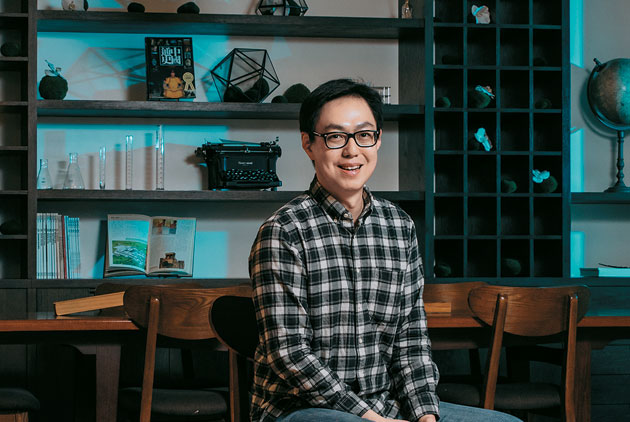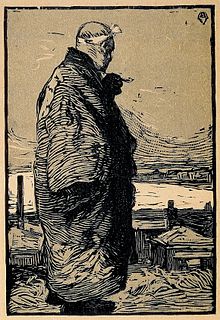https://www.facebook.com/hanching.chung/videos/164342066446738
Can Old-World Ceramics Survive Modern Tastes?
A style of pottery made for centuries in a small Romanian town has recently become a hot commodity.
. In 2012, Horezu pottery was recognized as an Intangible Cultural Heritage of Humanity by UNESCO, the United Nations Educational, Scientific and Cultural Organization.
Wan-Chun Alex Ma
Meet Alex Ma, the Second Taiwanese Oscar-Winner

Source:Chuo Tu-Hsin/Cheers
Global recognition is no mean feat. But in Alex Ma’s steely, determined eyes, the secret to success always seemed so simple. It was never anything more than unwavering focus coupled with the motivational mindset that there was “nothing to lose.” These two factors were the reason he always came out on top, no matter the obstacle, no matter the complication.
Taiwanese designers win Best Recording Package ...
https://www.taiwannews.com.tw › news
Apr 4, 2022 — — Taiwanese designers Li Jheng-han (李政瀚) and Yu Wei (于薇) have won the Grammy Award for Best Recording Package with their design for the album “ ...
Missing: CD | Must include: CD
The Album Art Studio That Made Pink Floyd’s Pig Fly
The filmmaker Anton Corbijn’s documentary “Squaring the Circle (The Story of Hipgnosis)” tells the tale of the London design company devoted to crafting the perfect LP sleeve.
*****
Steve Jobs and Japan. March 24, 2023.
6月4日重播
Steve Jobs 與 Issey Miyake (三宅 一生, 1938~ 2022) The Secret Passion of Steve Jobs | NHK. Sōsaku-hanga. 川瀨巴水 Kawase Hasui /
https://www.facebook.com/hanching.chung/videos/1404701773377753
AN APPRAISAL
Why Steve Jobs Chose This Designer’s Turtlenecks
The real beginning of the fashion-technology love affair and its legacy lies with Issey Miyake, who died last week.

Daniel Simon/Gamma-Rapho, via Getty Images

Issey Miyake (三宅 一生, 1938~ 2022) 第一位外國時尚設計師在Paris Fashion Week登台 (in April 1974)
Issey Miyake (三宅 一生, 1938~ 2022) 第一位外國時尚設計師在Paris Fashion Week登台 (in April 1974)
https://en.wikipedia.org/wiki/Issey_Miyake
他以極富工藝創新的服飾設計、展覽及一生之水香水聞名於世。
生於廣島縣廣島市,1964年畢業於東京多摩美術大學平面設計系,畢業後曾在巴黎和紐約工作,1968年先是和紀梵希一起工作,不久,他又為紐約的高夫萊比恩工作。1970年回到東京,並成立了三宅設計事務所。
1980年代後期,三宅一生開始試驗一種製作新型褶狀紡織品的方法,這種織料不僅使穿戴者感覺靈活和舒適,並且生產和保養也更為簡易。這種新型的技術最後被稱為三宅褶皺(也稱一生褶),而子品牌Pleats Please也於1993年創建。製作這種織物時,需先將布料裁剪和縫紉成型,再夾入紙層之中,壓緊並熱熨,褶皺就形成了,並且會一直保持著。
In the late 1980s, he began to experiment with new methods of pleating that would allow both flexibility of movement for the wearer as well as ease of care and production. The garments are cut and sewn first, then sandwiched between layers of paper and fed into a heat press, where they are pleated. The fabric's 'memory' holds the pleats and when the garments are liberated from their paper cocoon, they are ready-to wear. He did the costume for Ballett Frankfurt with an ultra feather-polyester jersey permanently pleated in a piece named "the Loss of Small Detail" William Forsythe and also work on ballet "Garden in the setting". Miyake realized that the new method of making clothes fit well in dancers. After studying how dancers move, he sent 200 to 300 garments for dancers to wear a different one in each performance of The Last Detail. This led to the development of the Pleats, Please range and inspired him to use dancers to display his work.
From a young age, Miyake respected artist Isamu Noguchi, whose novelty and sense of fun in his designs inspired Miyake. He was also inspired by fashion designer Madeleine Vionnet's use of geometric calculations and "a single piece of beautiful cloth."[5] In Paris, he visited several museums and he mentioned that he was influenced by sculptors such as Constantin Brancusi and Alberto Giacometti
- 1966年 - ショールームビルとして東京の銀座にソニービルを建設[38]。
- 1968年
- 日本初のカラーブラウン管、「トリニトロン」方式のカラーテレビを開発[73]。この「トリニトロン」方式のブラウン管は、家庭用・放送業務用問わずテレビ・ビデオモニターの全商品で使われた。
- アメリカのCBSと合弁でシービーエス・ソニーレコード(現・ソニー・ミュージックエンタテインメント)を設立[42]。
- 1969年 - アイワと技術・業務・資本の提携。
- 1970年 - 日本企業としては初めてニューヨーク証券取引所に上場[42]。
- 1975年 - 電池の製造・販売を目的として、アメリカのユニオン・カーバイドとの合弁でソニー・エバレディ(現・ソニーエナジー・デバイス)を設立[47]。
1970年代は家庭用VTRの普及をめざし、1970年(昭和45年)に松下電器産業・日本ビクターなどと共同してビデオカセット規格「U規格」を立ち上げる。1971年(昭和46年)に対応製品「Uマチック」を発売するが成功せず、1975年(昭和50年)に小型化・低価格化を図ったビデオカセット規格「ベータマックス」を発売する
Sōsaku-hanga
Sōsaku-hanga (創作版画, "creative prints") was an art movement of woodblock printing which was conceived in early 20th-century Japan. It stressed the artist as the sole creator motivated by a desire for self-expression, and advocated principles of art that is "self-drawn" (自画 jiga), "self-carved" (自刻 jikoku) and "self-printed" (自刷 jizuri). As opposed to the parallel shin-hanga ("new prints") movement that maintained the traditional ukiyo-e collaborative system where the artist, carver, printer, and publisher engaged in division of labor, creative print artists distinguished themselves as creators of art for art's sake.
The birth of the sōsaku-hanga movement was signaled by Kanae Yamamoto's (1882–1946) small print Fisherman in 1904. Departing from the ukiyo-e collaborative system, Yamamoto made the print solely on his own: drawing, carving, and printing the image. Such principles of "self-drawn", "self-carved" and "self-printed" became the foundation of the movement, which struggled for existence in prewar Japan, and gained its momentum and flourished in postwar Japan as the genuine heir to the ukiyo-e tradition.
The 1951 São Paulo Art Biennial witnessed the success of the creative print movement. Both of the Japanese winners, Yamamoto and Kiyoshi Saitō (1907–1997) were printmakers, who outperformed Japanese paintings (nihonga), Western-style paintings (yōga), sculptures and avant-garde. Other sōsaku-hanga artists such as Kōshirō Onchi (1891–1955), Un'ichi Hiratsuka (1895–1997), Sadao Watanabe (1913–1996) and Maki Haku (1924–2000) are also well known in the West.
--
川瀨巴水 Kawase Hasui /The Secret Passion of Steve Jobs | NHK。
川瀨巴水 Kawase Hasui
川瀬 巴水(かわせ はすい、1883年(明治16年)5月18日 - 1957年(昭和32年)11月7日)は、日本の大正・昭和期の浮世絵師、版画家。本名は川瀬 文治郎(かわせ ぶんじろう)。
衰退した日本の浮世絵版画を復興すべく吉田博らとともに新しい浮世絵版画である新版画を確立した人物として知られる。近代風景版画の第一人者であり、日本各地を旅行し旅先で写生した絵を原画とした版画作品を数多く発表、日本的な美しい風景を叙情豊かに表現し「旅情詩人」「旅の版画家」「昭和の広重」などと呼ばれる。アメリカの鑑定家ロバート・ミューラー[1]の紹介によって欧米で広く知られ、国内よりもむしろ海外での評価が高く、浮世絵師の葛飾北斎・歌川広重等と並び称される程の人気がある。
仮名垣魯文は伯父に当たる。
NHK WORLD-JAPAN
Apple founder Steve Jobs had a love of shin-hanga, Japanese woodblock prints. Here, experts and old friends look at how this beautiful collection may have informed his own aesthetic sensibility.
The Secret Passion of Steve Jobs
WATCH FULL VIDEO

WWW3.NHK.OR.JP
- The Secret Passion of Steve Jobs | NHK WORLD-JAPAN On Demand
Nikkei Asia
Where business travelers have permission to go, by origin (As of Jan. 5).
****



沒有留言:
張貼留言